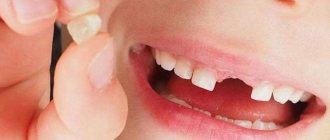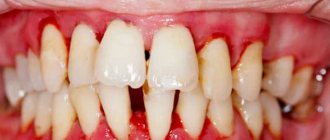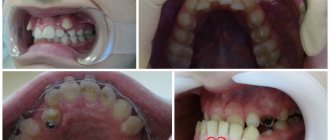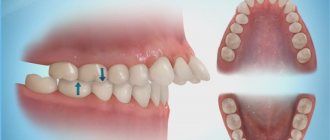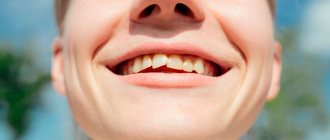Keep the norm
Teeth are the part of our body that we least want to take care of at an early age. Daily hygiene twice a day seems excessive, and going to the dentist is useless. And if you did not accustom your child to preventive care at the dentist at a tender age, then it is worth doing this during the puberty period. After all, it is precisely the difficult adolescence that becomes difficult for teeth. Since, at this time, they not only finally change from milk to radical, but are formed structurally.
Is chewing gum good for you?
The cult of chewing gum and whitening toothpaste at a young age does not add health to your teeth. Not only do teenagers chew gum for more than 15 minutes (this process can take several hours), but they also use it repeatedly. Chewing gum really cleans the mouth. However, only in the first minutes. Afterwards, it becomes a breeding ground for bacteria and plaque on thin enamel. Within a few hours in the mouth, 2 cubes of chewy sweetness can cause caries.
Striving for a stellar smile can lead to complete destruction of the enamel. Therefore, when at the age of 30 you want to show off your white teeth, you will have to spend a lot on replacing them. To prevent this from happening, you should contact a dental clinic, where they will select a program for gentle enamel cleaning. to become the owner of a “ Hollywood smile ”. Firstly, thanks to professional teeth cleaning to remove plaque and tartar. The dentist, using a sand-saline solution and an ultrasound machine, literally removes plaque from the teeth. This method can lighten the enamel by a tone or two, but not lighter than the natural color. This procedure is necessary in youth. It is not only possible, but also must be carried out every six months. Thanks to which your teeth will be healthier and cleaner.
Sometimes doctors offer gel teeth whitening. This is a long-lasting and invisible way to whiten and make your teeth lighter. Its advantage: safety for health and a very stable result. And lastly, clinics often use whitening strips. They contain peroxide and work many times better than any other method. However, due to the acid content, teenagers should avoid it.
A milk tooth in an adult: to remove or not?
If a baby tooth has not fallen out, is susceptible to caries or interferes with the growth of a molar, this does not mean that it is doomed to be removed. Dentists still recommend taking care of it and extending its service life for you, curing it if necessary. If only because there is no guarantee that the root one will then grow in place of the removed milk one, even if its rudiments are discovered.
To make a final decision about baby teeth in adults, it is necessary to take an x-ray. The image will allow the doctor to understand whether at least some rudiments of the molar tooth have formed, as well as in what condition the roots of the milk tooth are - whether they are resolving or not. If there are no buds and the roots are not going to resolve, removal is contraindicated. If the roots have resolved and the tooth is wobbly, then most likely it will have to be removed and you will have to wonder about the optimal prosthetic option.
If the baby tooth is held firmly, but you are not very happy with its appearance and you would like to make it more aesthetic, the dentist will offer options for solving this problem. In this case, much also depends on the position of the “experimental” in the dentition. Restoration, veneers. Lumineers - modern dentistry has a sufficient arsenal of solutions specifically for your problem.
One way or another, having discovered that there is still a “piece of childhood” in your smile, go to the clinic, where specialists will take an x-ray, determine the presence and condition of the rudiments of a molar tooth, the condition of the roots of a milk tooth - and provide high-quality treatment, preserving your health and guaranteeing comfort.
Malocclusion in a teenager
Malocclusion or “crooked teeth” is a fairly common occurrence for children, regardless of gender, place of residence or lifestyle. These are rather the consequences of genetics, which can echo through generations. One way or another, there is no particular point in thinking and trying to understand this. You just need to treat it, contact a specialist. The meaning of this treatment is as follows:
- Smooth and healthy teeth receive nutrition from the body more fully
- less spoilage due to good hygiene
- implantation and prosthetics procedures in adulthood
- It’s trite, but a person becomes happier and more satisfied with his appearance, which directly affects future health.
Therefore, get involved and the sooner the better!
Plates and braces are orthodontic structures that are typical for adolescence. The main reason for their acquisition is malocclusion . Today, 90% of boys and girls face this problem. It is difficult to protect a teenager from this problem. Malocclusion is a consequence not only of genetic characteristics and bad habits in childhood. Most often, this problem occurs due to chronic diseases and injuries. Uneven teeth not only spoil the appearance, but can also subsequently cause tooth decay and early tooth loss. As you know, as a teenager you want to try everything.
Timeline of teething
Most babies' first teeth emerge between 6 and 7 months of age, but this may happen earlier or later. In general, your baby's teeth will most likely appear in the following timeline windows:
6-7 months
During this time, the process of erupting the first teeth begins. The first teeth to emerge are usually the lower central incisors, which are the two middle teeth at the bottom. Children at this age become more active. They begin to grab and pull objects towards themselves, transfer objects from one hand to another, and may even begin to crawl. It is important to keep an eye on small objects within your baby's reach as he will want to put everything in his mouth during teething!
From 8 to 13 months
Between 8 and 12 months, your baby's upper central incisors will emerge. Additionally, sometime between 9 and 13 months, they will have upper and lower teeth next to their upper central incisors (called lower and upper lateral incisors). In addition to teething, it is important to understand that other important gross motor milestones are reached during this developmental window. Most babies are able to sit up, stand up without assistance, take their first steps, pick up and throw objects, roll a ball, and grasp objects.
From 13 to 20 months
Typically, between 13 and 16 months, your baby's first molars will appear on the bottom and top at about the same time. Soon after this, their canines will appear on both the top and bottom rows, around 16 to 20 months.
From 20 to 30 months
At the final stage of teething, the baby's back teeth or second molars appear in the bottom row. Although most teething symptoms appear the same in both babies and toddlers, there are some differences as your baby gets older. First of all, your baby can now tell you about his discomfort and pain, unlike non-verbal babies. On the other hand, many babies will not show any signs of discomfort and will not complain at all about pain when moving their molars. For other babies, the pain may be significantly worse because their first molars are larger than their other molars. They may even complain of headaches or jaw pain!
Other factors
At the age of 13-17, boys and girls strive to try everything that is on the legal and illegal market in order to feel like adults. This desire leads to non-carious lesions of the hard tissues of the tooth. Working at a computer around the clock causes the same consequences, as it creates electromagnetic radiation. It also negatively affects his teeth. If you spend more than 8 hours a day at the monitor, you can earn necrosis of dental tissue. First, the teeth stop shining, then they darken and may turn black. In this process, the dental tissue becomes loose. The strangest thing is that there is no pain. As a result, if you miss the moment, you can lose your teeth. In turn, the removal of permanent teeth leads to deformation of the dentition.
Processes occurring inside the body can also lead to consequences. Hormones from the developing reproductive system can cause gingivitis and even periodontal disease. Therefore, oral hygiene at this time should be treated with maximum attention. It doesn't hurt to brush your teeth after every meal and at least have a quarterly dental check-up.
If you do not resort to these measures, then due to heredity and laziness, you can acquire desmodontosis as an additional disease. The disease is not a pleasant one. When it is present, tissues are destroyed at such a rate that within a few weeks of its appearance, teeth become mobile. And the dynamics, according to tradition, originate from the front teeth. The fair half of humanity is more predisposed to this disease. More than 60% of girls experience it during adolescence, and receive consequences after 20-25 years.
And these are just some of the problems that threaten teenagers’ teeth. It is better to diagnose possible diseases before their active stage begins.
Dental clinic specialists can not only identify a predisposition to certain types of oral lesions, but also prescribe preventive treatment. Without delaying a visit to the dentist, you will save your child’s time and family budget. You can see the dentist at any time convenient for you. Tweet
Timing of teething
One of the most common questions parents ask is: “How long does teething take for babies?” It is useful to know both the time frame for the appearance of the first tooth and the time frame for the eruption of all teeth. In general, teething is an ongoing process that occurs between 6 and 24 months of age. Although your baby has twenty baby teeth that will appear over the course of two years, teething fortunately only causes pain and irritation at the time the tooth is about to break through the gum. It is not known exactly how long it will take for a tooth to fully erupt, but on average experts say it can erupt within 1-7 days per tooth. However, teething symptoms usually only last a couple of days, so if your baby experiences discomfort for an extended period of time, it's safe to assume it's not teething.
What mistakes should not be made?
Every caring mother and attentive father strive with all their might to make it easier for the child to survive the teething process. But sometimes panic forces adults to make serious mistakes. Below we will look at what you should absolutely not do:
- Cool the gums too often. Cold helps, but you should not constantly be exposed to cold, as this can cause the development of a cold.
- Do not give babies crackers, refined sugar and other foods that can scratch the mucous membranes. You can prepare a chilled teether for your baby.
- Soda solution instead of gels. Don't experiment. It is better to consult a pediatrician who will recommend the optimal dental gel.
It is difficult to say for sure how long it takes for babies to erupt teeth. But parents during this period should be prepared for any turn of events.
How long do eights grow?
The process takes place individually. At what age a wisdom tooth can erupt depends on its readiness. By the age of 17, its main part (crown) is just beginning to form. The roots are still in progress. This will continue for about 3-4 years. In the range of up to 40 years, you can expect its appearance from the gums. For each person, this process occurs differently in terms of time and symptoms. The Guinness Book of Records records the latest case at 94 years. Some people experience a whole list of unpleasant symptoms with pain and fever, while for others everything happens quietly and calmly. At what age wisdom teeth erupt is a secondary matter. The speed of appearance is influenced by the size of the jaw. If there is not enough space, it will be difficult for the crown to come out of the gums.


